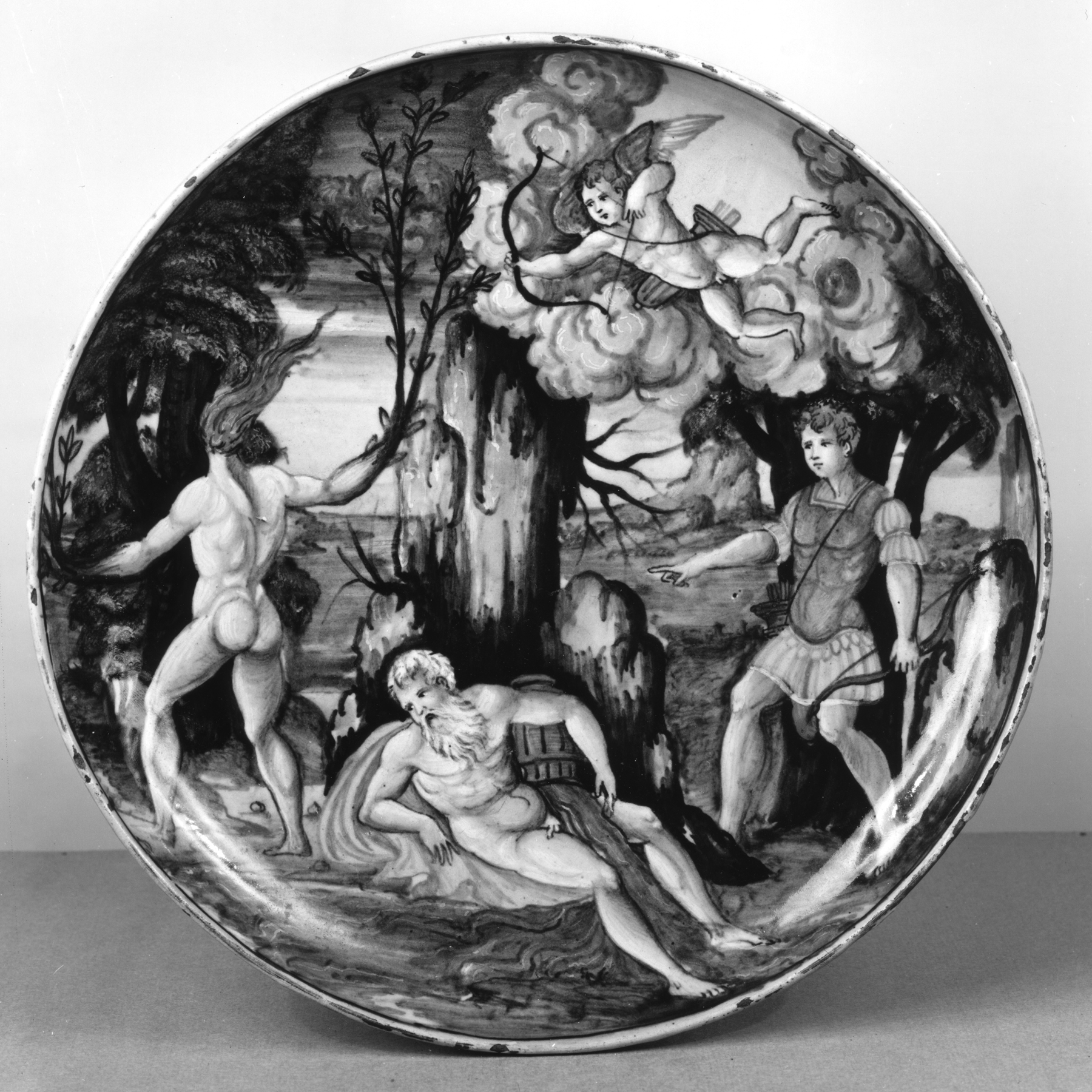Dish with Apollo and Daphne
(Renaissance Europe )
This dish depicts an episode from the ancient Roman poet Ovid’s (43 BCE-17 CE) “Metamorphoses” (Book I). Cupid, god of erotic love and shown pointing at Daphne with an arrow in the cloud on the upper right, tricks the god Apollo into falling in love with the nymph Daphne, daughter of the river-god Peneus. Apollo chases Daphne until she comes to the river of her father, who reclines in the center. On the left, Daphne is seen fleeing towards the left, her back towards the viewer. After praying to Peneus to save her, Daphne was transformed into a laurel tree. The beginning of her transformation is depicted here, as her arms have already turned into branches. This story was often portrayed in Italian Renaissance paintings and sculptures, as Daphne was a traditional symbol of chastity and laurel branches sybols of virtue. This scene is characteristic of “istoriato” (tells a story) wares, which were very popular in sixteenth-century Italy and illustrated episodes from Classical or Biblical narratives. The front of the dish is painted in blue, copper-green, yellow, ochre, tan, brown, black, and opaque white, and the back is painted bluish-white with one yellow circle at the rim. This dish was likely made in Urbino, a leading center for ceramic production in the Renaissance. To view other dishes with the same subject matter, see 48.1326, and 48.1368; for more information on the “istoriato” style, see 48.1487; for general information on “maiolica,” see 48.1336.
Provenance
Provenance (from the French provenir, 'to come from/forth') is the chronology of the ownership, custody, or location of a historical object. Learn more about provenance at the Walters.
Don Marcello Massarenti Collection, Rome; Henry Walters, Baltimore, 1902, by purchase; Walters Art Museum, 1931, by bequest.
Geographies
Italy, Urbino (Place of Origin)
Measurements
2 3/8 x 10 5/8 in. (6 x 27 cm)
Credit Line
Acquired by Henry Walters with the Massarenti Collection, 1902
Location in Museum
Not on view
Accession Number
In libraries, galleries, museums, and archives, an accession number is a unique identifier assigned to each object in the collection.
In libraries, galleries, museums, and archives, an accession number is a unique identifier assigned to each object in the collection.
48.1495


